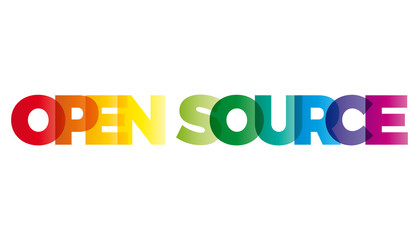Introduction to Open-Source Software (OSS)
What is Open-Source Software?
Open-Source Software (OSS) refers to computer software with a source code that is freely available to the public. It is distributed under a license that allows users to view, modify, and distribute the software without any restrictions. OSS promotes collaborative development and community-driven innovation, leading to high-quality software solutions that are accessible to everyone.
Definition and Characteristics
Open-source software is characterized by its transparency, flexibility, and collaborative nature. Unlike proprietary software, which is developed and owned by a single entity, OSS encourages contributions from a diverse community of developers worldwide. This collaborative approach fosters innovation, accelerates development, and ensures the continuous improvement of software products.
Examples of Popular Open-Source Software
Some examples of popular open-source software include the Linux operating system, the Apache web server, the Mozilla Firefox web browser, the WordPress content management system, and the LibreOffice productivity suite. These software products are widely used across various industries and sectors, ranging from enterprise IT to education and government.

Advantages of Open-Source Software
Benefits for Individuals and Businesses
Open-source software offers several advantages for individuals and businesses alike.
Cost-effectiveness
One of the primary benefits of open-source software is its cost-effectiveness. Since OSS is freely available to download and use, organizations can significantly reduce their software licensing costs compared to proprietary alternatives. This cost-saving advantage is particularly beneficial for small businesses, startups, educational institutions, and non-profit organizations with limited budgets.
Flexibility and Customization
Another advantage of open-source software is its flexibility and customization capabilities. Since the source code is accessible to anyone, developers can modify and adapt the software to meet their specific needs and requirements. This flexibility enables organizations to tailor software solutions to their unique workflows, business processes, and IT environments, leading to increased efficiency and productivity.
Collaboration and Community Support
Harnessing the Power of Collaboration
One of the key strengths of open-source software is its collaborative development model.
Global Community of Developers
OSS projects attract a diverse community of developers, engineers, and enthusiasts from around the world who contribute their expertise, skills, and resources to improve the software. This global collaboration fosters creativity, knowledge sharing, and innovation, leading to the rapid development of high-quality software solutions that address real-world challenges.
Rapid Innovation and Improvement
The collaborative nature of open-source software enables rapid innovation and continuous improvement. Since development is decentralized and transparent, issues and bugs are identified and addressed more quickly, and new features and enhancements are introduced at a faster pace. This agility and responsiveness ensure that open-source software remains relevant, competitive, and up-to-date in a rapidly evolving technological landscape.

Transparency and Security
Transparent Development Process
One of the key principles of open-source software is its transparent development process.
Peer Review and Quality Assurance
Since the source code is open and accessible to everyone, it undergoes continuous peer review and quality assurance by the global community of developers. This collaborative scrutiny helps identify and fix software vulnerabilities, bugs, and performance issues, resulting in more robust, reliable, and secure software products.
Enhanced Security Measures
Contrary to common misconceptions, open-source software is often more secure than proprietary alternatives. The transparent nature of OSS allows security vulnerabilities to be discovered and addressed promptly, reducing the risk of exploitation by malicious actors. Additionally, organizations can implement additional security measures, such as code audits, penetration testing, and security patches, to further enhance the security of open-source software deployments.

Long-Term Viability and Sustainability
Assurance of Longevity
Open-source software offers assurance of longevity and sustainability.
Avoiding Vendor Lock-In
By adopting open-source software, organizations can avoid vendor lock-in and dependency on a single vendor for software support and maintenance. Since the source code is freely available, organizations have the freedom to switch vendors or manage software independently, reducing the risk of vendor-driven price hikes, service disruptions, or product obsolescence.
Continuous Development and Updates
Open-source software benefits from continuous development and updates from the global community of contributors. This ongoing support ensures that software products remain relevant, reliable, and supported over the long term, even as technology evolves and user needs change. Organizations can leverage the latest features, enhancements, and security updates without being tied to a specific vendor or software version.

Conclusion
In conclusion, the benefits of using open-source software are manifold. From cost savings and flexibility to collaboration and security, OSS offers a compelling alternative to proprietary software solutions. By embracing open-source software, organizations can harness the power of community-driven innovation, enhance security and reliability, and future-proof their technology investments. As the digital landscape continues to evolve, open-source software will play an increasingly vital role in driving innovation, competitiveness, and sustainability across industries and sectors.

FAQs (Frequently Asked Questions)
- What is open-source software? Open-source software refers to computer software with a source code that is freely available to the public, allowing users to view, modify, and distribute the software without restrictions.
- How does open-source software differ from proprietary software? Open-source software encourages collaboration and community-driven development, whereas proprietary software is developed and owned by a single entity, with restricted access to the source code.
- What are some examples of popular open-source software? Popular open-source software includes the Linux operating system, the Apache web server, the Mozilla Firefox web browser, and the WordPress content management system.
- Is open-source software secure? Yes, open-source software is often more secure than proprietary alternatives due to its transparent development process, continuous peer review, and rapid response to security vulnerabilities.
- How can organizations benefit from using open-source software? Organizations can benefit from open-source software by reducing software licensing costs, customizing solutions to meet specific needs, and avoiding vendor lock-in while leveraging community-driven innovation and support.





